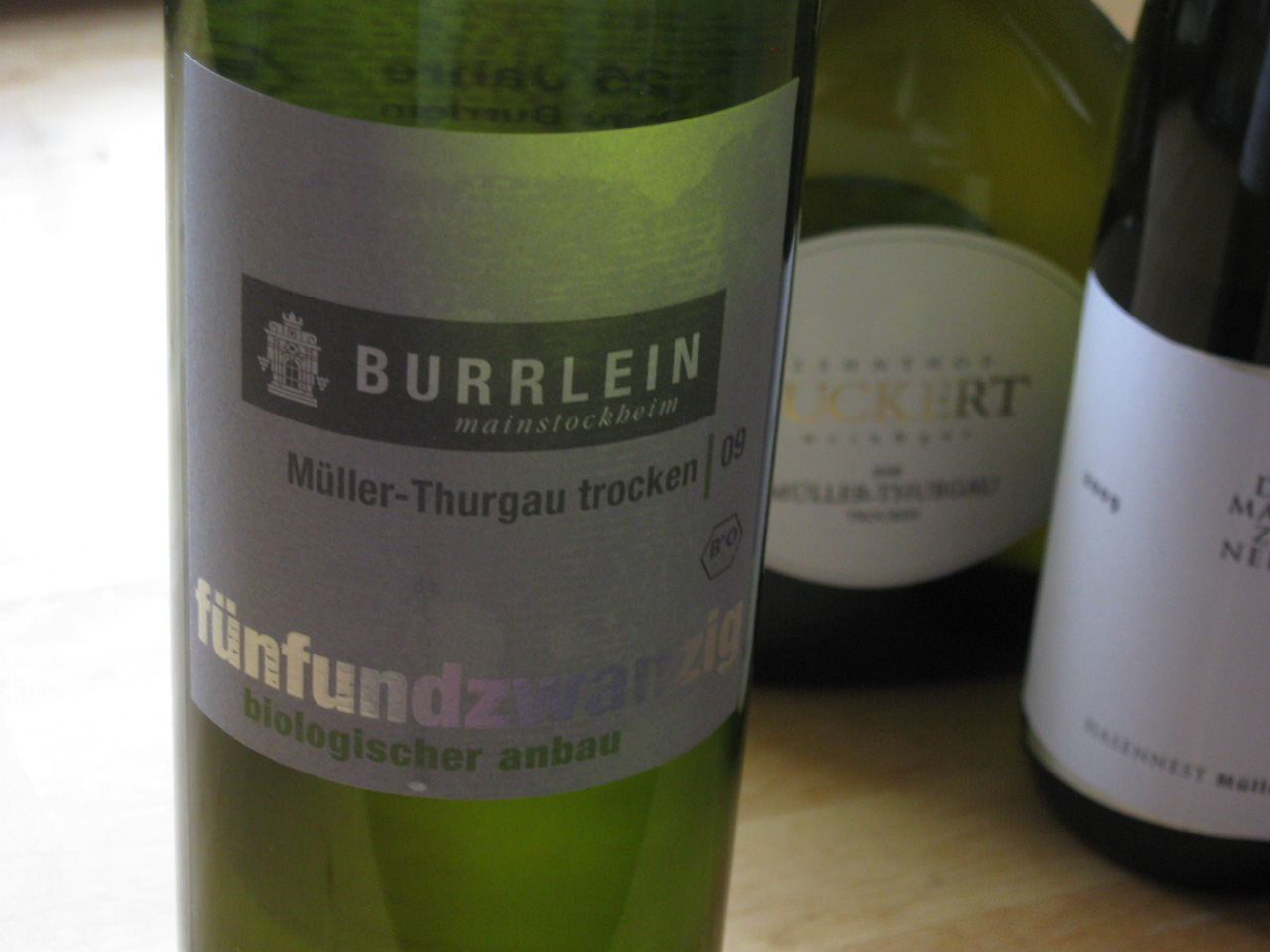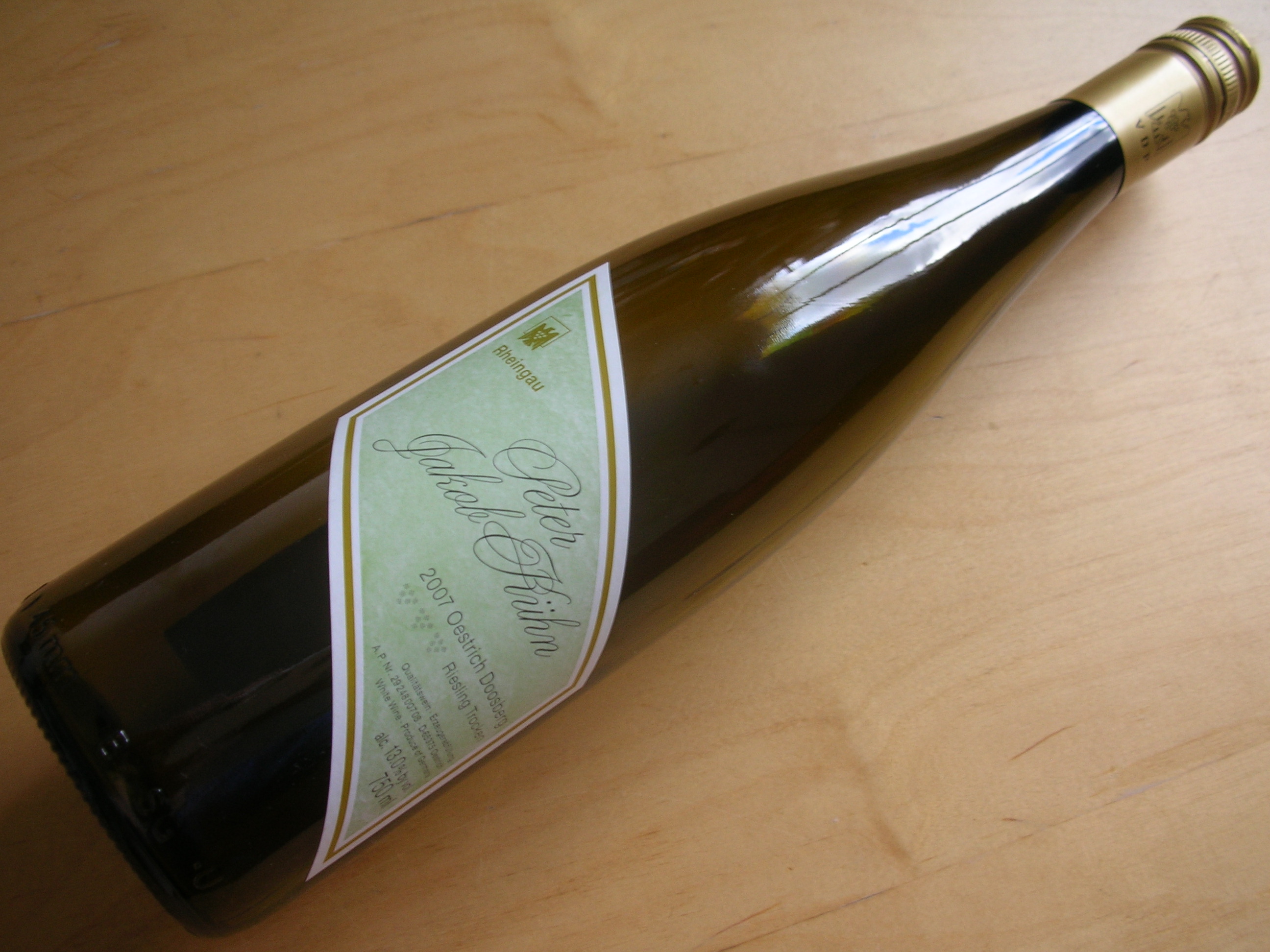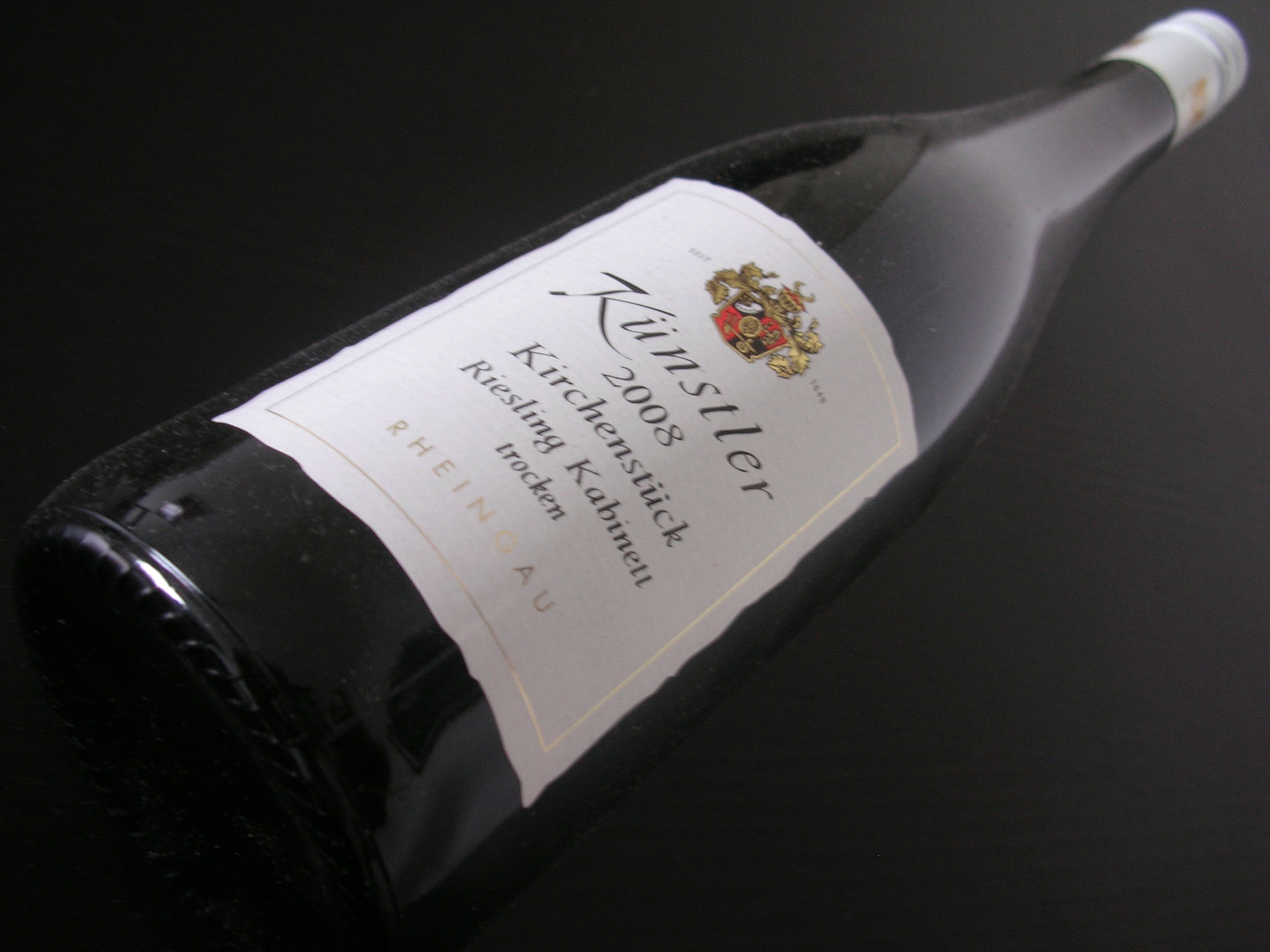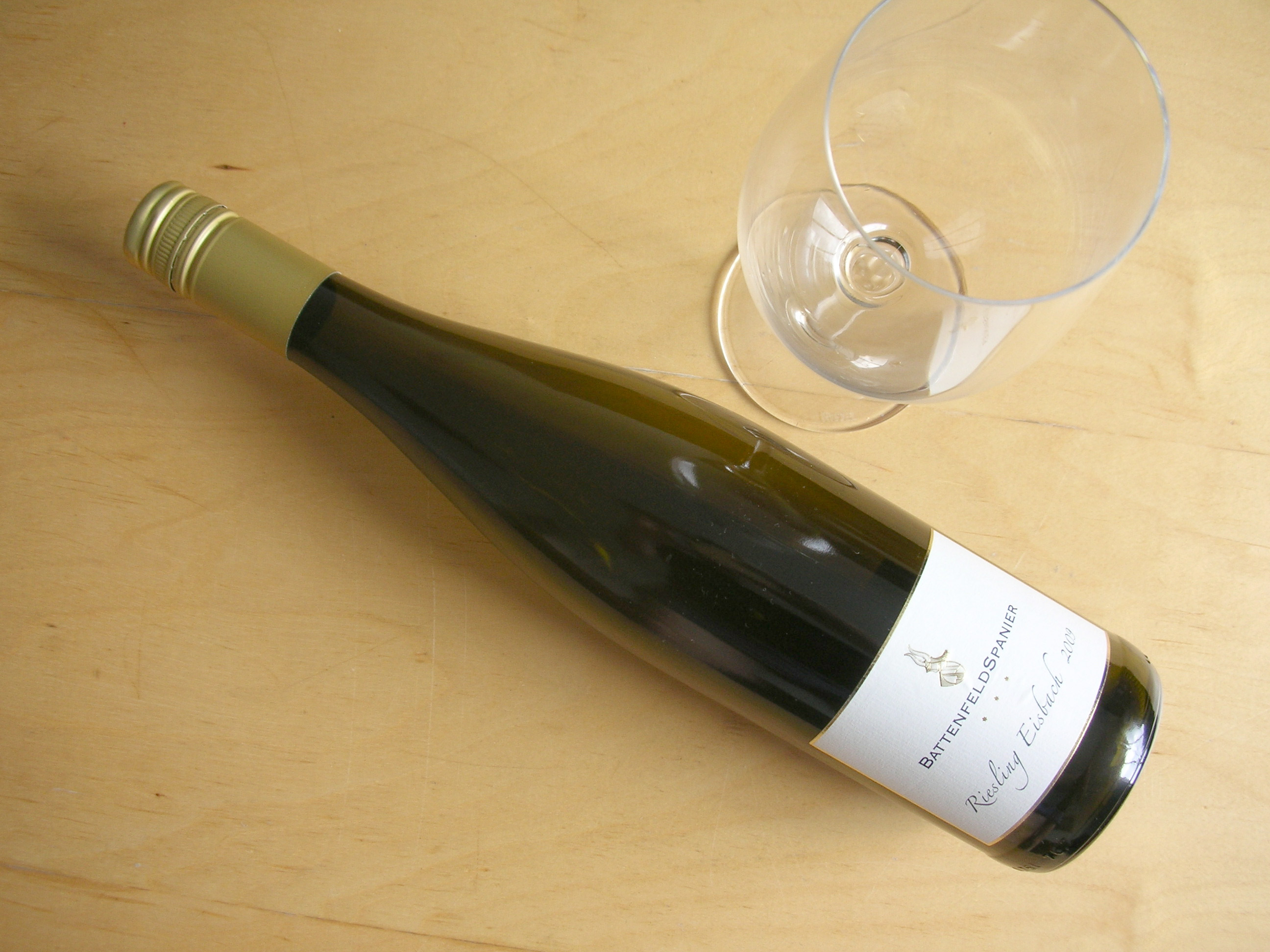Zehnthof Luckert, Sulzfelder Cyriakusberg Müller-Thurgau trocken 2008
Reviewed in our Müller-Thurgau report, and updated accordingly:
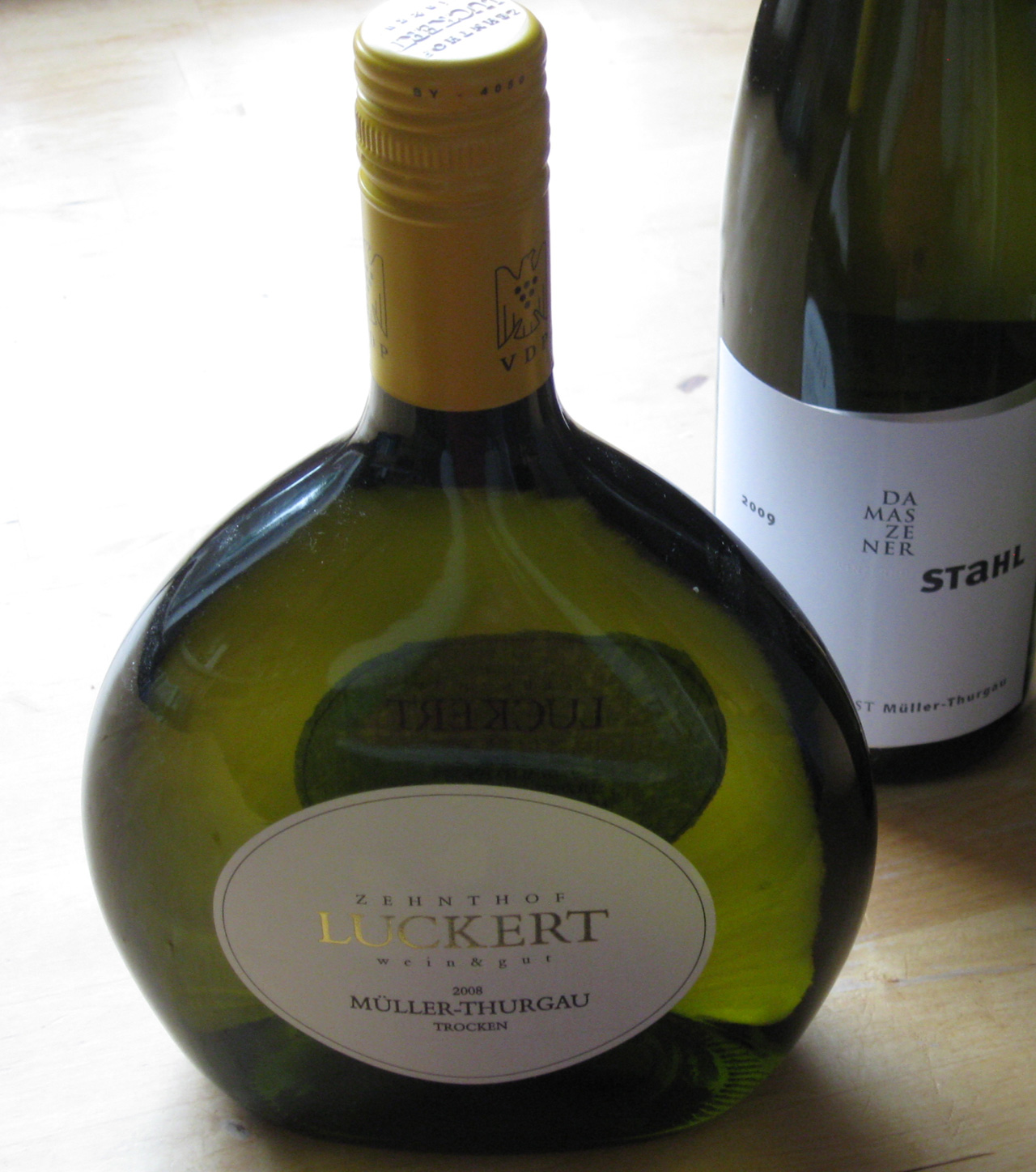
Light straw colour
Smells like ripe apples, sliced raw Kohlrabi (cabbage turnip?) and maybe a little freshly cut grass. In the mouth, mild acidity, again ripe apple fruit and an earthy, limestony kind of minerality.
Quite an achievement for Luckert to get such power and relative depth out of a grape variety otherwise known for high yields and little character. It could easily pass for a dry Silvaner Spätlese, both in taste and in substance.
If you
a) have had a Silvaner from Franken before and liked it,

